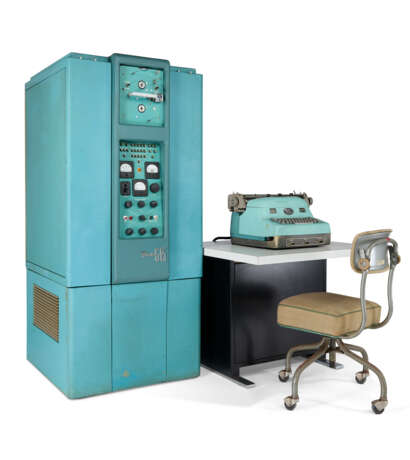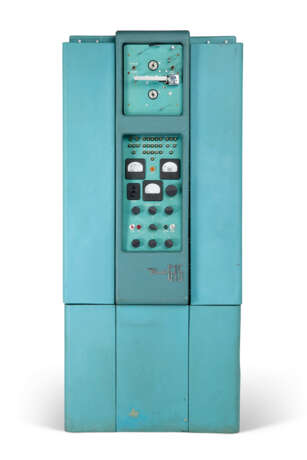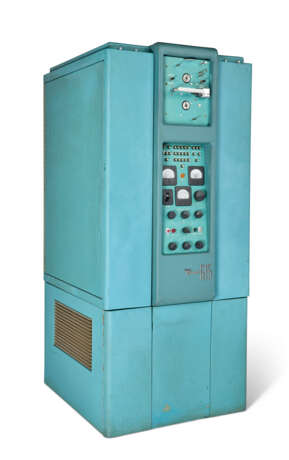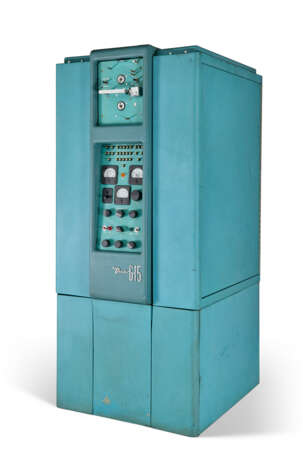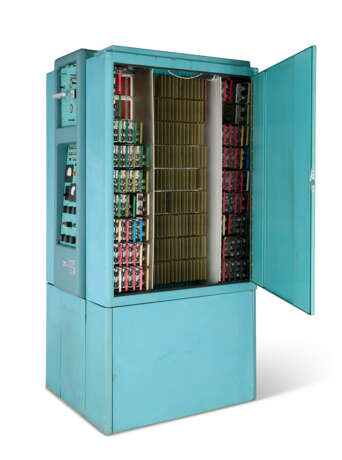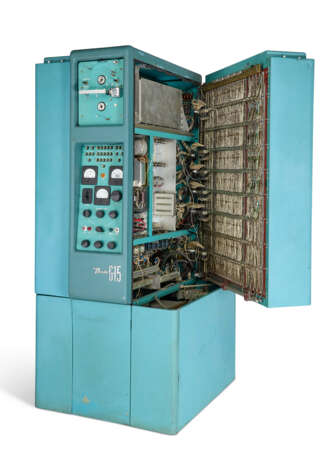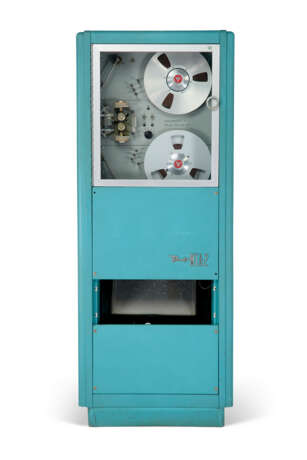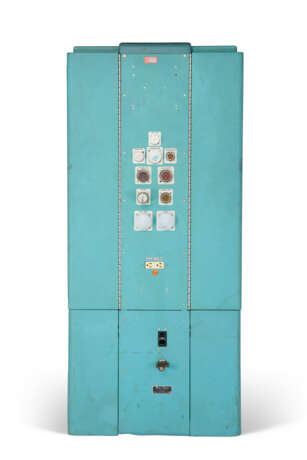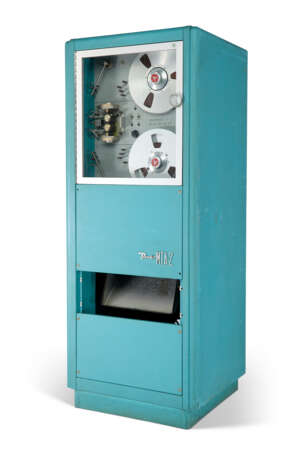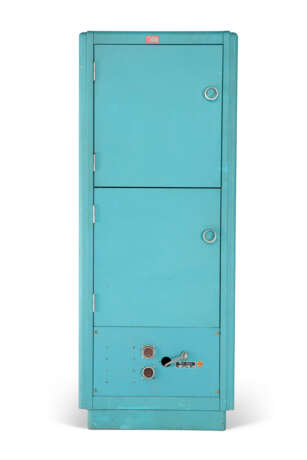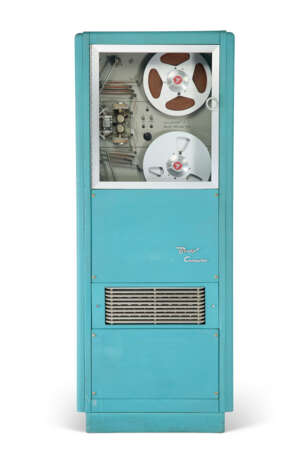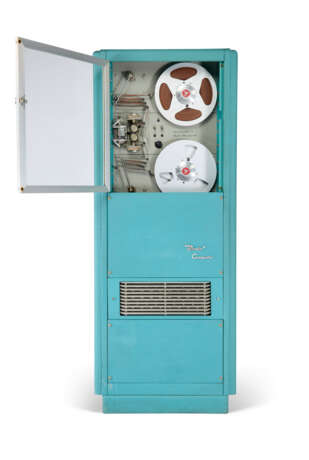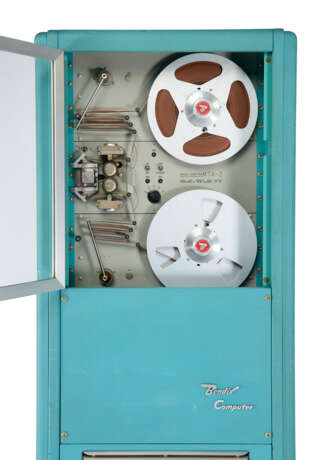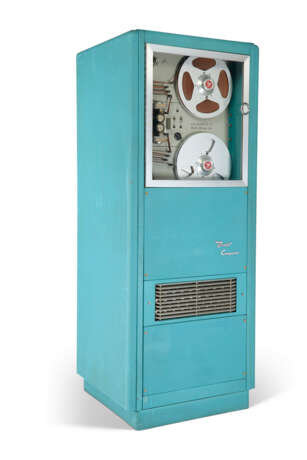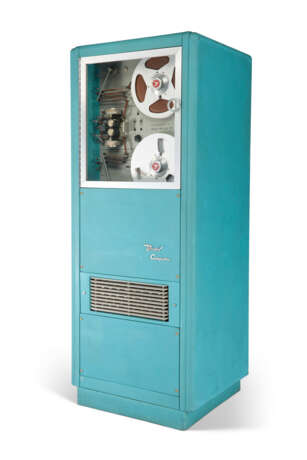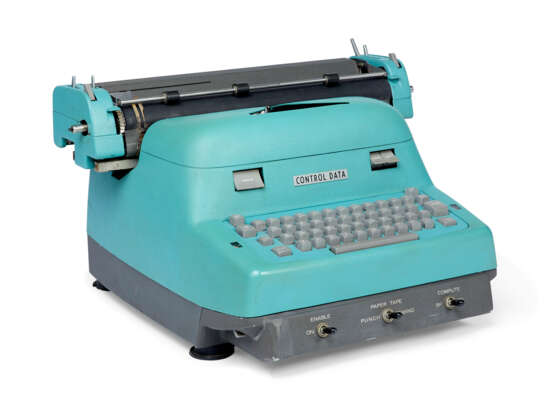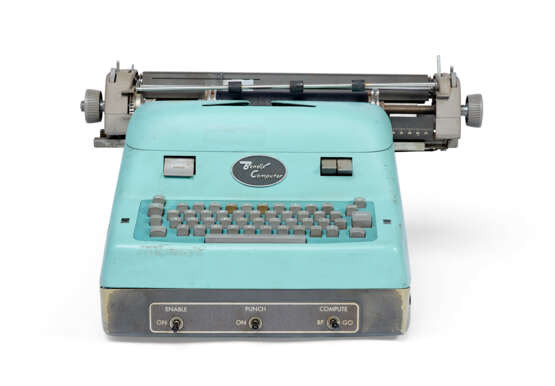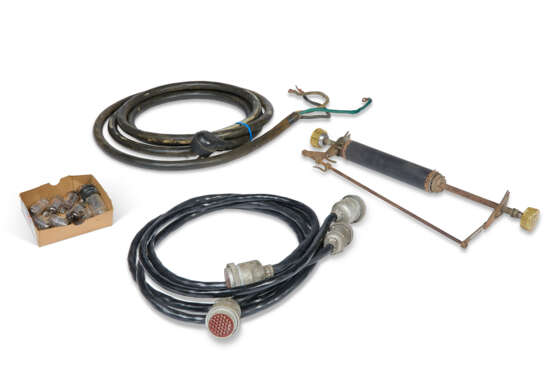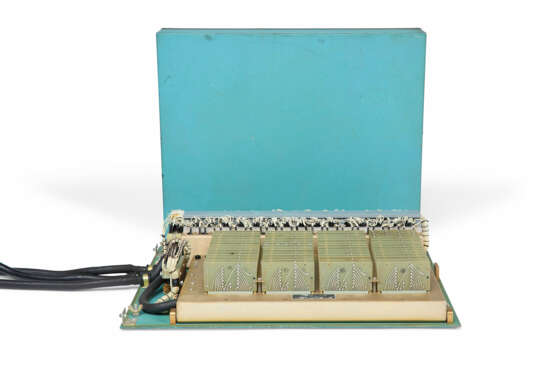ID 1279134
Lot 16 | A BENDIX G-15D COMPUTER
Estimate value
$ 10 000 – 15 000
BENDIX CORPORATION, 1956
Serial no. 317
Comprising G-15D computer, two MTA-2 tape drives, Bendix typewriter, and Bendix I/O typewriter
The democratization of computing power.
The Bendix G-15D computer was first introduced as a design concept in the mid-50s, the line running up until 1963. A central example of early digital computer technology, the G-15D was an iteration of the Bendix G-15, designed by Harry Huskey, who had previously worked on the Electronic Numerical Integrator and Computer (ENIAC) and the Automatic Computing Engine (ACE). This G-15D was engineered to provide an affordable, reliable, and versatile computing solution for scientific, engineering, and business applications – the present example a very rare and surviving original, complete and unrestored model.
The compact design of the G-15D was innovative at a time when computers were typically room-sized behemoths. The machine was approximately the size of a refrigerator, a considerable reduction in footprint that made it accessible to smaller institutions and businesses. Technologically, the G-15D was notable for its use of a drum memory system. This form of memory storage, though slower than the later-developed core memory, was a cost-effective solution at the time and contributed to the G-15D’s affordability. Equally, the instruction set of the G-15D was designed to be relatively simple yet versatile, thus enabling users to perform a wide range of computational tasks, from basic arithmetic operations to more complex scientific calculations. Indeed, the significant simplification and ease of programming that characterised the Bendix G-15D allowed the machine to support multiple programming languages, machine code and assembly language and later models were compatible with higher-level languages like ALGOL and FORTRAN.
Ultimately, this compact design, affordability and versality marked a crucial progression in the democratization of computing power and made the G-14D one of the first computers to be marketed as a general-purpose machine suitable for both scientific and business applications. This dual capability broadened its appeal and helped pave the way for future developments in the personal and small-business computer markets. Exemplifying the transitional phase of computing history, the G-15D bridged the gap between the era of large, specialized machines and the emergence of smaller, more general-purpose computers and today remains a landmark in the evolution of digital computers, highlighting the importance of design innovation and accessibility in the proliferation of computing technology.
CPU: 61 in. (154.9 cm.) high, 27 ½ in. (69.9 cm.) wide, 34 in. (86.4 cm.) deep
Further details
This lot is subject to additional disclaimers. Please carefully review Section E(2), subsection (m) “Vintage Computers and Machines”.
| Auction house category: | All other types of objects, Instruments |
|---|
| Auction house category: | All other types of objects, Instruments |
|---|
| Address of auction |
CHRISTIE'S 8 King Street, St. James's SW1Y 6QT London United Kingdom | |
|---|---|---|
| Preview |
| |
| Phone | +44 (0)20 7839 9060 | |
| Buyer Premium | see on Website | |
| Conditions of purchase | Conditions of purchase |
